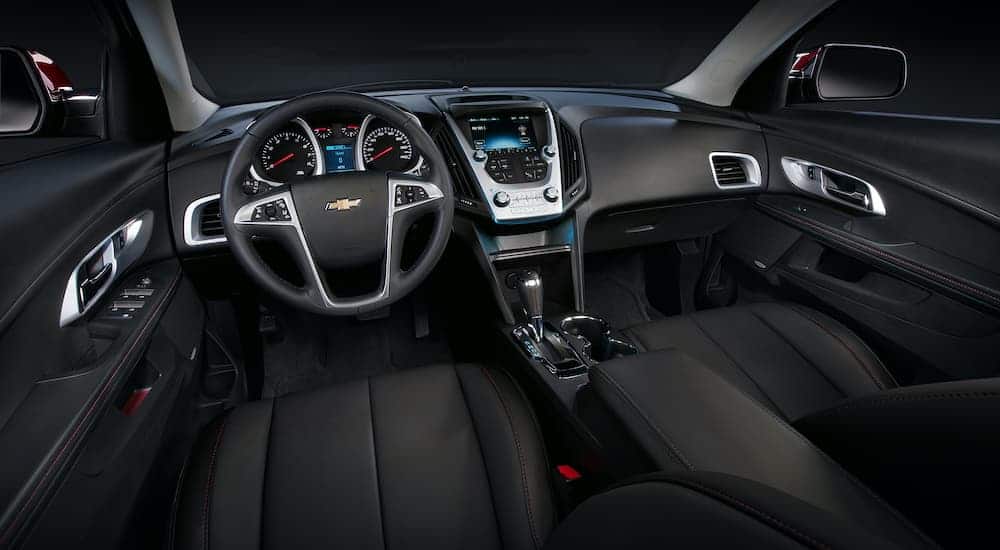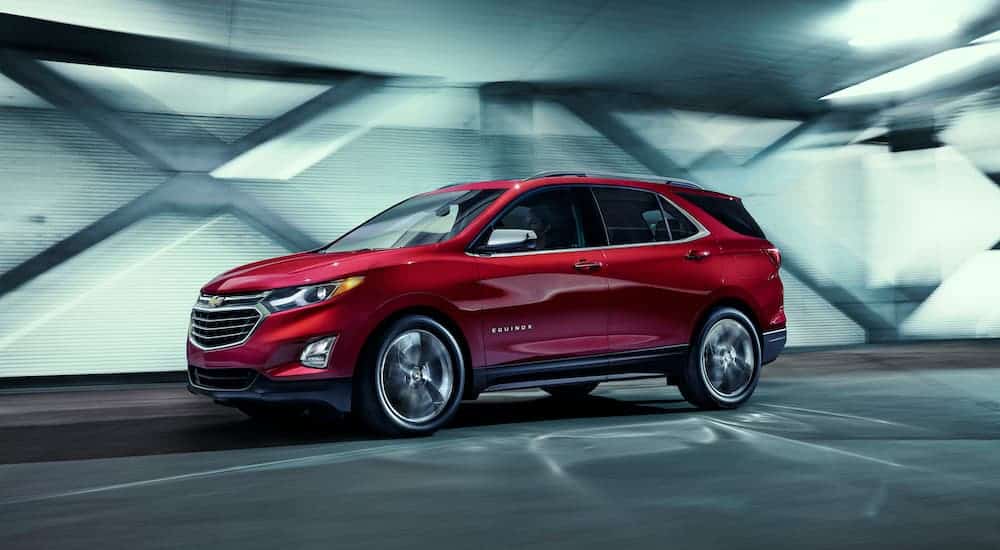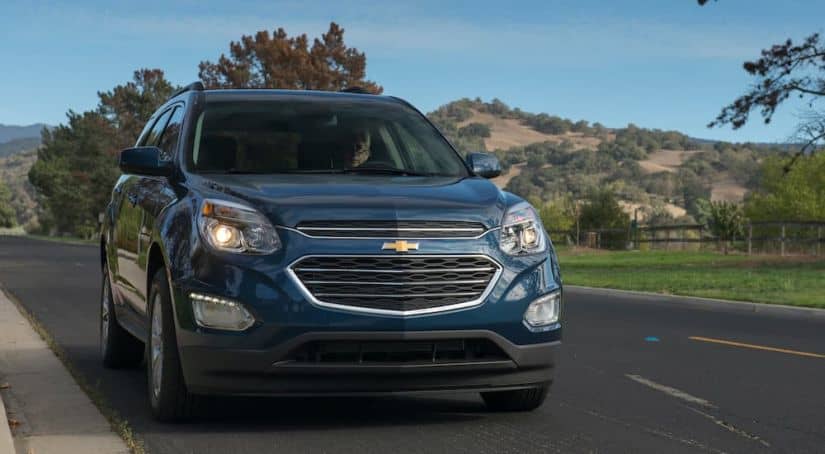Do you plan on taking a trip in your RV but still want to take your used Chevy Equinox on the journey with you? You are probably going to want to do some flat towing. Flat towing is great for those planning on taking another vehicle with them on a trip, perhaps to journey through an off-road trail, or to explore some roads less traveled, or when going into a small town where an RV just doesn’t fit. Whatever the reason you decide to bring along another vehicle with your RV, there are some things you probably want to know about flat towing your Chevy Equinox.
What is Flat Towing?
Flat towing is where you hitch a vehicle behind an RV and have it follow along behind the RV during your travels without it being hoisted on a trailer. This can be quite useful when you plan to take the RV to a spot for camping but plan to use another vehicle to travel to residential areas, commercial districts, or small towns where the RV may not quite fit. Having a second vehicle is also useful when you don’t want to waste a ton of fuel trying to navigate through narrow city streets or smaller districts.
Flat towing allows you to use a tow bar to hook up to your vehicle and then tow it behind the RV while all four wheels are on the ground. This makes it different from trailering, where the vehicle is mounted on a trailer or dolly and towed behind the RV, similar to the way most 4x4s and other high-torque pickups tow cargo. In the case of flat towing, all four wheels of the vehicle must be on the ground, even though the vehicle’s engine is off. The benefit of flat towing instead of trailering is that you don’t have to purchase a separate trailer, store the trailer when it’s not in use, nor do you have to worry about rigging up the trailer to carry a vehicle.

Can Every Vehicle Be Flat-Towed?
When it comes to flat-towing, not every vehicle is eligible for this traveling feat. The reason for this has to do with the drivetrain configuration of a vehicle. Not every all-wheel drive vehicle can be flat towed, just like not every vehicle with an automatic transmission can be flat-towed. But your next question is probably “why can’t every vehicle be flat towed?” and it’s because if the vehicle isn’t configured for flat towing, then it can severely (or permanently) damage the drivetrain; in particular, the transmission.
Flat towing is especially harsh on automatic transmissions because they’re not designed for the vehicle to travel at moderate to high speeds in neutral where gear changes are expected to occur. What ends up happening is that the wheels are turning, but the engine isn’t turning, which means that there are no revolutions being sent from the motor to the transmission. That means that while the driveshaft is rotating and the wheels are turning, the gears in the transmission aren’t properly being shifted to keep pace with the moment of the vehicle, nor are they being lubricated, which can strip them down and damage the components.
Can a Chevy Equinox Be Flat-Towed?
As mentioned at the start of the article, the Chevy Equinox can be flat-towed. However, some measures must be taken in order to ensure that the Equinox can be properly flat towed. Newer generations of the Chevy Equinox – from the second generation in 2010 onward – can be flat towed. Still, it would be wise to check with your dealership or owner’s manual before attempting. All-wheel drive configurations of the Equinox, for instance, are not suited for being flat towed, and attempting to do so can cause harm to the drivetrain.
The Equinox can also be dolly-towed, which is where two wheels of the vehicle are left on the ground, and two wheels are hoisted up on a dolly. However, the all-wheel drive Equinox is not designed to be dolly-towed. Because you should not tow cars with their drive wheel on the ground because you will damage the transmission, there is no configuration where towing an all-wheel drive vehicle will work since all wheels are drive wheels. The reason a front-wheel drive model can be dolly towed is because you are lifting the drive wheels off the ground and rolling the car on wheels that will not directly affect the transmission.

How Do You Flat-Tow a Chevy Equinox?
Now that you know that you can flat tow a Chevy Equinox, how do you do it? This gets a little tricky because flat towing an Equinox isn’t as simple as hooking it up to a hitch on an RV and dragging it along for the ride while putting the gear shift in neutral. If you did that, then you would likely destroy the drivetrain in the process. GM enabled the newer generations of Equinox crossover SUVs for flat-towing by keeping the 6-speed automatic transmission lubricated during the towing process, but only for the front-wheel drive configuration.
First things first: you have to hitch the Equinox to your RV. This is done using what’s called a tow bar. Some vehicles will require you to drill holes into the frame to attach a tow bar, but thankfully the Equinox doesn’t require any drilling or frame-work to get the tow bar equipped. There are usually tow bars made available to fit crossover SUVs like the Equinox without damaging or requiring any modification to the frame. Once the Equinox is hooked up to the RV, then you’ll need to put the gear into neutral. You’re not quite ready to tow the Equinox just yet, though.
Next, start the vehicle up and leave the engine running for about five minutes so that the powertrain components can be adequately lubricated with oil. After that, you’ll need to leave the key in the ignition and set the car into Accessory Mode so that the steering wheel is free. This can be accomplished by activating the engine start button without holding down the brake.
You’ll also want to remove fuse 32 from the fuse box, which affects the discrete logic switch for the ignition and runs tertiary systems when the key is in the ignition. If you don’t remove the fuse, then the battery will likely be drained from the other systems that will activate when the key is put into the ignition. Even still, make sure all the other accessories, like the radio, are disabled so that there’s no unnecessary drain on the battery while the Equinox is being flat towed.
Your flat towing experience doesn’t end there, though. It’s suggested to keep the engine running for about five minutes before setting off on your excursion in order to get the oil flowing through the engine components and the transmission. That’s one of the more vital parts of flat towing vehicles without manual transmissions. Special modifications need to be made to ensure that the automatic transmission parts are still properly lubricated and aren’t being forced into a malfunction while the vehicle is in neutral and moving.
GM suggests that you not exceed 65 mph when flat-towing a Chevy Equinox so that no unnecessary wear and tear is made to the transmission. If you set everything up successfully, you should be able to flat tow your Chevy Equinox to another destination without any problems. It’s advised to occasionally turn the engine over and let it run for about five minutes at rest stops or when filling up your RV.
It’s Time to Get Towing
You’ll need to check the RV manual to ensure it can tow a vehicle with the curb weight of the Equinox, which is probably somewhere between 3,274 lbs and 3,665 lbs. From there, you can proceed to follow the instructions involving a tow bar, fuse, and ignition, and you should be good to go. While it might seem somewhat complex, flat towing is a heck of a lot more convenient and cost-effective than trailering your vehicle. So, check your manuals, hook up your Chevy Equinox, and get going on your next adventure.



